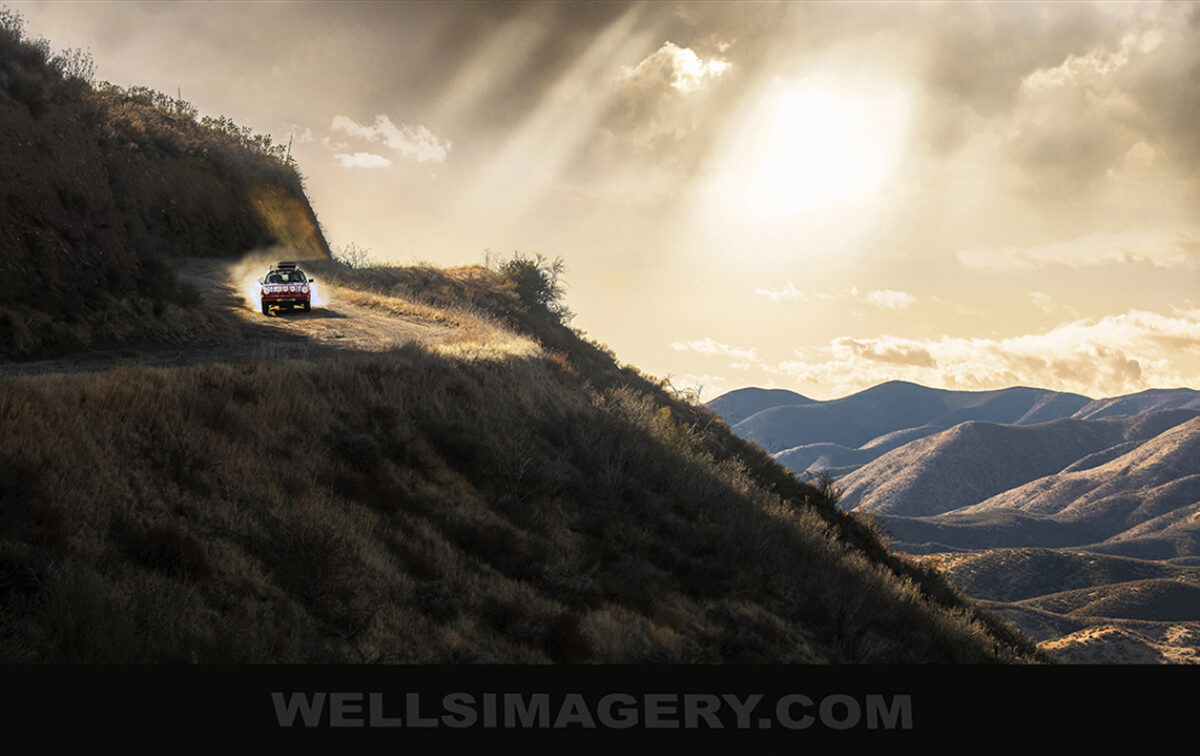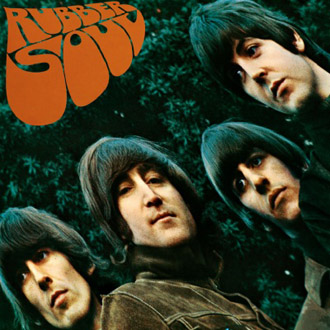THE BEATLES : RUBBER SOUL
Released in December 1965, Rubber Soul presented an evolved Beatles sound to the world that was closely associated with the American folk rock of Bob Dylan and The Byrds. With the help of producer George Martin, Brits John Lennon, Paul McCartney, George Harrison and Ringo Starr built an album that went beyond a bunch of well-crafted pop songs.
Using speeded up tapes, electronic processing, fuzz bass, and ambiguous lyrics – not to mention a stretched cover photograph by Robert Freeman – the Fab Four were pushing the boundaries with their newfound artistic control. The Beatles stood at the crossroads and created plastic soul.
No longer a collection of singles, this album hinted at the experimentation to come on Revolver and Sgt. Pepper. This was also the first Beatles album to include compositions by all four members with no cover versions. Yet it still retained some of the innocence of earlier releases. Rubber Soul will forever go down in the record books as introducing the Indian sitar to popular music and inspiring Brian Wilson of The Beach Boys to produce his own thematic masterpiece, Pet Sounds.
It’s well documented that UK pressings of The Beatles LPs are among the better sounding versions, as well as being the most authentic. Unfortunately on this side of the pond, Capitol was busy manipulating the Beatles output in the 60’s for their own purposes. Up until Rubber Soul, the US label had changed the title and/or cover for every Beatles album. They also cut their records from EMI copy tapes, which in some cases were reprocessed to sound like the Beatles were playing in an echo chamber. Capitol’s version of Rubber Soul also suffered somewhat from this reverb treatment, however it could be argued that the US track listing is superior to the UK in its sequencing and selection. The addition of “I’ve Just Seen a Face” and “It’s Only Love” from the UK album Help, and the deletion of upbeat tracks like “Drive My Car”, “Nowhere Man”, “If I Needed Someone” and “What Goes On” did create more of a acoustic folk flavor to the album, even if it changed The Beatles’ intentions.
There is also the choice of mono and stereo releases for this album to consider. Although entertaining, the stereo mix of Rubber Soul, unlike the earlier and later Beatles four-track recordings, is an experiment gone wrong in my opinion. Lead vocals are panned hard right, and most of the musical instruments are placed hard left. So, unless you are into karaoke or playing rhythm guitar along with the Beatles voices, I’d concentrate on the mono version – which is what I will do here.
With its glossy heavily laminated cover photograph of the four lads in brushed suede jackets and longish locks, a flip-back original mono UK Rubber Soul album (PMC-1267) is a piece of art. No group name appears on a Beatles cover for the very first time, and the brown pop art font style used for the title is perfectly in tune with the swinging ‘60’s. Sliding a heavyweight Y/B Parlophone labeled record out of its Emitex lined inner sleeve is a welcome ritual, and listening to a –4 tube cut mono LP on a high-resolution system is a wonderful experience. With centered lead guitar and vocal tracks featured strong in the mix, a connection to the music exists that’s simply not possible when listening to the stereo mix. Overall balance on this pressing is excellent with tonality that is rich in texture. “Drive My Car†featuring John’s tambourine and Ringo’s drumsticks, is reproduced with believable clarity. And on “Norwegian Woodâ€, realistic sitar and guitars ring out with convincing natural reverberation. This pressing really shines on the more complicated tracks like “Think For Yourself†with its layered vocals and distorted Rickenbacker bass.
The later –5 tube cut mono LP is another good choice, especially if you have a system that is a bit reticent in the upper midrange. Compared to a –4 LP, the –5 has a slight midrange bump and a more extended treble. This works well on smooth tracks like “What Goes Onâ€, but on denser tracks like “Norwegian Wood†it can sound a bit forward with the driving bass line becoming a little lost in the mix. These differences are minor however and only discernible on a high-resolution system. I’m not recommending the rare –1 “loud cut†LP simply because it is not as musical as the others. This pressing is called “loud†because when it was cut the music signal was sonically compressed, and the LP created seems louder when it’s played back (like many CDs produced today).
While the original Capitol Rubber Soul mono LP (T 2442) has that great line up of songs starting with “I’ve Just Seen A Faceâ€, sonically it can’t hold a candle to the best UK and Japanese mono pressings. John’s autobiographical “In My Life†has George Martin playing keyboards at half speed then speeding them up on tape to sound like a mellotron. On this pressing, that effect is diminished because of compression. The sound of the drum kit also loses some realism in the same way. On tracks with minimal reverb, it sounds a lot like the loud cut –1 UK mono except that the treble is brighter and the upper midrange is somewhat edgy. It’s too bad there isn’t a better sounding vinyl pressing for this version, which is the one many baby boomers grew up with. A good sounding CD of this is available on a box set called The Beatles: The Capitol Albums Vol.2 (look for an SK1 number on the sticker for the true Capitol mono version). Recently, EMI re-mastered the mono UK Rubber Soul mix as part of a limited edition mono CD box set. This is a stellar release with sonics that rival the best vinyl pressings, so be sure and pick this up if you are a fan. There is even talk of a future vinyl version of the mono box set. Happy listening! -Randy Wells
See Randy’s Audio/Music Evaluation System Here.
(Photographer: Robert Freeman)

